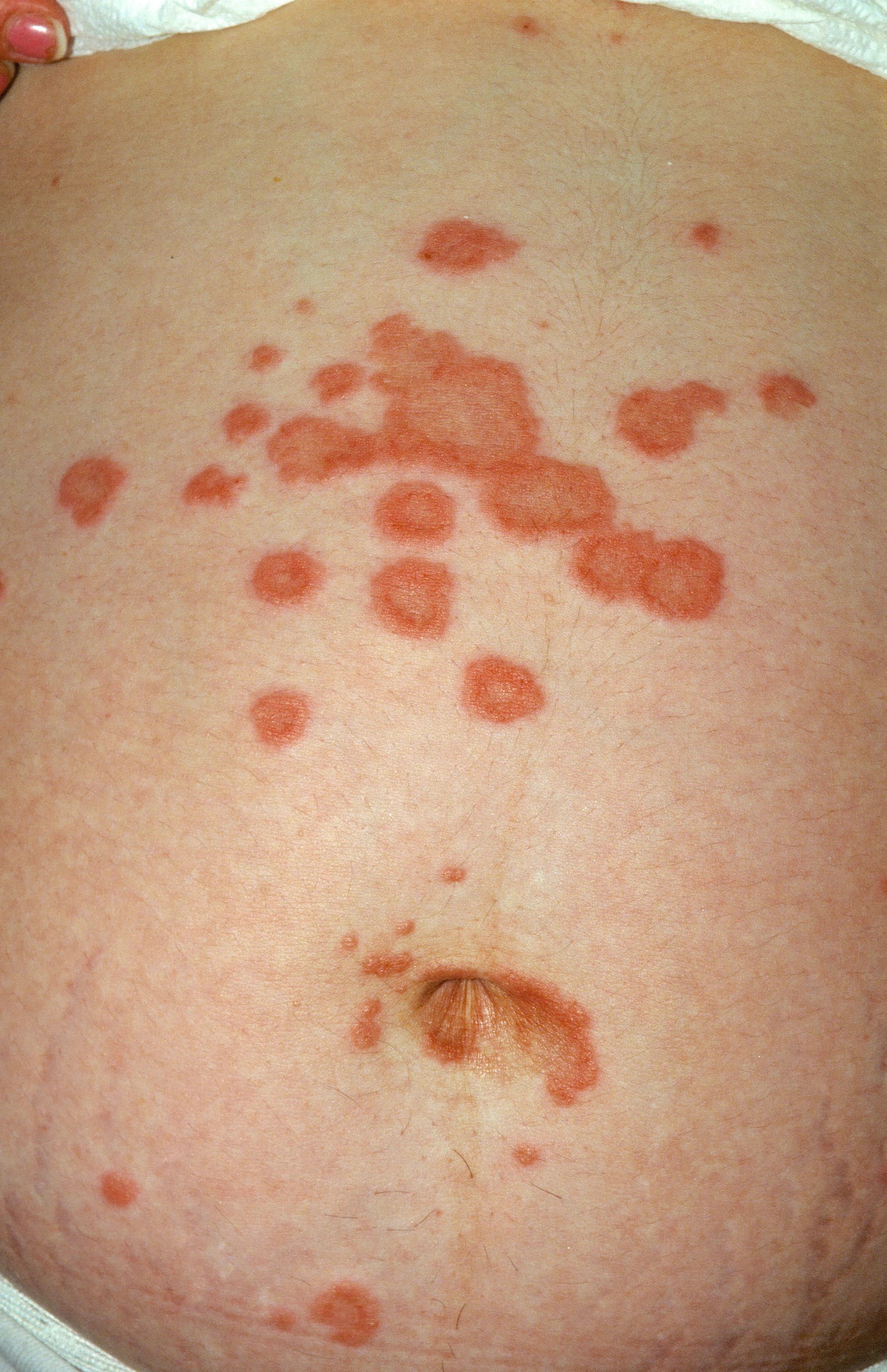
Urticarial plaques with a preference for the abdomen and periumbilical area are typical.

Urticarial plaques with a preference for the abdomen and periumbilical area are typical.
Pemphigoid gestationis (PG), previously known as herpes gestationis, is an autoimmune blistering disorder most commonly associated with pregnancy although it may occur in association with trophoblastic tumors, hydatidiform mole or choriocarcinoma. PG binds the NC16A domain of collagen XVII (BPAG2, BP180).
Itching is often the first symptom. The skin lesions of PG often begin on the abdomen and include urticarial plaques, vesicles and frank bulla. It may then spread to the rest of the trunk and extremities, but is rare on the face or oral mucosa. Flares have been noted after delivery, with the resumption of menses, ovulation or beginning oral contraceptives. Approximately 20% of patients will experience premature delivery. Up to 10% of the babies will develop skin lesions due to passive transfer of antibodies. Approximately 10% of patients will develop Graves disease.
| Characteristic | Pemphigoid Gestationis | PUPPP |
|---|---|---|
| Onset | 1 trimester thru postpartum | 3rd trimester |
| Gravida | Multigravida | Primigravida |
| Location preference | Periumbilical | Stria |
| Morphology | Urticarial plaque → Vesiculobullous; targetoid | Papulourticarial |
| Pathogenesis | Autoimmunity | Stretching eliciting immune response |
| Recurrence | Common | Rare |
| Baby | SGA, prematurity; fatality reported | Rare problems |
DIF of perilesional skin shows linear deposition of C3 along the basement membrane zone. Alternatively CD4 immunohistochemistry of Formalin fixed tissue is positive in PG and negative in PUPPP. Enzyme-linked immunosorbent assay (ELISA) detects the specific antibodies (usually IgG4) against collagen XVII.
BP180 ELISA is a valuable test to differentiate PG from PUPPP as it is highly sensitive for PG, negative in PUPPP and is unaffected by the use of topical steroids which can cause a skin biopsy DIF to give a false negative result [JAAD 2017;76;560].
Maternal antibodies may be transferred to the fetus resulting in vesicles and bulla in the newborn.
Who is Dr. White? | Privacy Policy | FAQs | Use of Images | Contact Dr. White